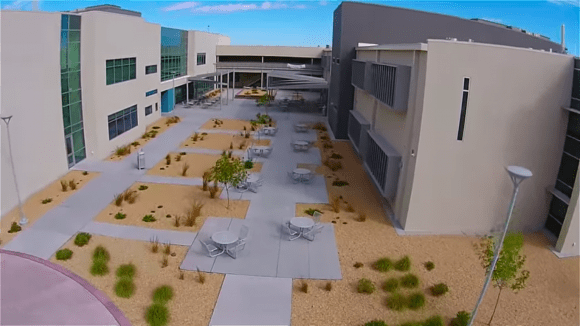Remember that movie Grease? Yes, the one from 41 years ago when John Travolta was young and thin? The one that cast physically–developed 30-year-olds to play seniors in high school? The one that glamorized unprotected sex and juvenile delinquency? Yeah, that one! Okay, I LOVE that movie! It is actually one of my favorites, and has been required movie–watching for all of my kids. I don’t only love it because I was a scrawny 8–year–old when I saw it and walked out of the theatre wishing I was Olivia Newton John and also married to John Travolta. It is not only because the singing and dancing were amazing, or that they never did homework, or that they all lived in sunny California and it seemed like they had no parents—in fact, I don’t think any parents were ever seen once in that film. I think the mass appeal of that movie comes down to the intrigue and complexity of intergroup relations.
Sandy (played by Olivia Newton John) was a young, naive “good girl”, an Australian transplant who had to suddenly switch to a California high school where she knew only one friend. However, before school started, she managed to have a summer fling and fall in love with the popular and charismatic leader (played by John Travolta) of the social group (a gang, really) called the “T–Birds”—a group of fairly harmless, somewhat misogynous young derelicts that break the rules and don’t seem to consider their futures beyond high school. Danny also fell in love, but he knows that Sandy would never be accepted by his group because she was a member of the “nerdy” group, so he just tries his best to forget about her. In contrast to their rival gang group, the out–group called the “Scorpions”, the T-Birds seem mild in comparison—the T-Birds are obviously meant to be the desirable in-group of the movie, and the group that many other students wished they were a part of. Girls fawn over them, social outcasts want to be friends with them, and even the teachers act favorably toward them and grant them special privileges. This shows the power that in-groups can have.
According to the Tajfel’s Social Identity Theory (1981), people are influenced by different aspects of themselves at various times, which can affect their behavior (Penn State, 2019). One’s personal identity is comprised of one’s conscience, or moral beliefs, their experiences, and one’s objective individual characteristics, such as sex or age. One’s social identity is very different, however—it is comprised of how one feels and believes about who they are in a given situation, and this is highly influenced by one’s group membership.
While personal identity and social identity overlap one another, Tajfel outlined three components of social identity: feeling a sense of belonging to a group, feeling that the membership in that group is important, and feeling committed to that group (Penn State, 2019). The social identity theory posits that when in their group, people are more likely to be influenced by social identity than by personal identity, and people also may consider others who are not in their group as belonging to an “out–group”. In a group threat situation, one’s behavior would be determined by their social identity, whereas in a personal threat situation, one’s behavior would be determined by their personal identity. This is the case in Grease—the scene where Danny pretends like he doesn’t know the overexcited and lovestruck Sandy when they finally come face–to–face while surrounded by Danny’s in–group members, is a perfect example of one’s social identity kicking in when there is a possible threat to the group (in this case, the threat would be to Danny’s status as the leader and, by extension, to the group’s hierarchy and status).
Many films of the 1970s and 80s dealt with intergroup behavior, such as The Outsiders, West Side Story, and the Breakfast Club— the in–group vs. the out–group theme is usually a big moneymaker theme for the movie industry. Ultimately, and I think this is why people love this movie, Danny allows his personal identity rather than his social identity determine his behavior and decides that, in the name of love, he will sacrifice his positive social value—his status, power, and resources that being a member of the dominant group offered him. He is willing to trade it all in for a regular life with Sandy. However, at the same time that Danny is planning on making this monumental and life–changing shift in his behavior, Sandy is planning on the exact same type of behavioral change and for the same reason—love, even if it means becoming a member of a group who displayed out–group discrimination towards her. She is willing to become a member of a dominant social in–group she never really aspired to join. However, social dominance theory indicates that subordinate group members (such as Sandy) may want to maintain the status quo in hopes that one day they may be a part of the dominant group and reap the benefits of positive social values that in–group membership can provide.
Intergroup relations can be seen all around us, at work, in the playground, within institutions, and also at the movie theatre. For those of you who have never seen Grease, don’t walk—run to your screen of choice and watch it! It is fun, musical, intriguing, happy, exciting, romantic, but more importantly, it offers a deep dive into the world of high school intergroup relations. 


References
Gruman, J. A., Schneider, F. W., & Coutts, L. M. (2017). Applied Social Psychology:Understanding and Addressing Social and Practical Problems (3rd ed.). Thousand Oaks, CA:Sage. ISBN 9781483369730
Penn State. (2019) Lesson 6: Intergroup relations/diversity. Retrieved from https://psu.instructure.com/courses/2008549/modules/items/27030727








